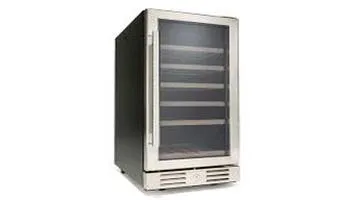Essential Safety Equipment for Construction Workers: A Comprehensive Review
Essential safety equipment for construction workers is crucial for preventing injuries and ensuring a secure work environment. Key items include hard hats to protect against head injuries from falling objects, and high-visibility vests to enhance worker visibility amidst heavy machinery. Safety goggles and face shields are vital for guarding against dust, debris, and chemical splashes, while earplugs or earmuffs protect hearing in noisy environments. Steel-toed boots offer foot protection from heavy objects and sharp debris. Gloves are essential for hand protection, offering grip and shielding from cuts or chemical exposure. Harnesses and fall arrest systems are critical for those working at heights, preventing falls and serious injuries. Together, this equipment forms the foundation of a comprehensive safety protocol on construction sites.

The construction industry is a cornerstone of modern infrastructure, yet it remains one of the most hazardous sectors to work in. Ensuring the safety of construction workers is paramount, and this is where essential safety equipment comes into play. Proper safety gear not only protects workers from potential injuries but also enhances productivity and morale. This review delves into the critical safety equipment every construction worker should have, examining its importance, functionality, and the best practices for usage.
1. Personal Protective Equipment (PPE): The Basics
At the heart of construction safety lies Personal Protective Equipment (PPE). This category encompasses a range of gear designed to protect various parts of the body from specific hazards.
- Helmets/Hard Hats: A construction site is replete with falling objects, and a hard hat is the first line of defense against head injuries. Modern helmets come with additional features such as face shields, earmuffs, and even built-in lighting for enhanced visibility in low-light conditions. It’s crucial that these helmets meet the standards set by regulatory bodies like the Occupational Safety and Health Administration (OSHA).
- Safety Glasses and Face Shields: Eye protection is indispensable when dealing with activities that produce flying debris, sparks, or harmful chemicals. Safety glasses and face shields should comply with ANSI Z87.1 standards, which ensure they can withstand high-impact scenarios. Some advanced models offer anti-fog and UV protection features, catering to diverse working environments.
- Ear Protection: Prolonged exposure to loud machinery can result in irreversible hearing loss. Earplugs and earmuffs are essential to mitigate this risk. Noise reduction ratings (NRR) are a key factor to consider when selecting ear protection, with higher NRR values indicating better protection.
- Respiratory Protection: Construction sites often expose workers to dust, fumes, and other airborne hazards. Respirators, whether disposable masks or more sophisticated half-face and full-face respirators, are vital. The choice of respirator depends on the specific contaminants present. For instance, N95 masks are effective against non-oil-based particulates, while P100 respirators offer a higher level of filtration.
2. Protection for Extremities
The hands and feet are particularly vulnerable on a construction site, making their protection a priority.
- Gloves: Different tasks require different types of gloves. Cut-resistant gloves are essential for handling sharp objects, while insulated gloves are necessary for electrical work. Materials like leather, rubber, and synthetic blends provide varying degrees of protection and dexterity.
- Safety Footwear: Steel-toed boots are a staple in construction, providing protection against falling objects and compression. Moreover, slip-resistant soles are crucial to prevent falls on slick surfaces. Some boots also offer puncture-resistant soles and metatarsal guards, catering to specific site hazards.
3. High-Visibility Clothing
Visibility is critical on bustling construction sites, particularly those near roadways or heavy machinery. High-visibility clothing, often made from fluorescent materials with reflective strips, ensures that workers are seen from a distance. ANSI/ISEA 107 standards classify these garments into three classes based on the level of visibility they provide, with Class 3 offering the highest level of visibility.
4. Fall Protection Systems
Falls are one of the leading causes of fatalities in the construction industry. Fall protection systems, including harnesses, lanyards, and anchor points, are essential for any work conducted at heights. Full-body harnesses, when properly fitted and used in conjunction with shock-absorbing lanyards, can significantly reduce the risk of injury in the event of a fall. It’s important that these systems are regularly inspected and maintained to ensure their effectiveness.
5. Tool Lanyards and Safety Nets
To prevent tools and materials from falling and causing injury to workers below, tool lanyards and safety nets are indispensable. Tool lanyards secure tools to workers, while safety nets provide a secondary layer of protection by catching falling objects.
6. First Aid Kits and Emergency Equipment
Despite all precautions, accidents can still happen. Well-stocked first aid kits, easily accessible and regularly checked, are crucial for immediate response to injuries. Additionally, fire extinguishers, eyewash stations, and emergency showers should be strategically placed around the site.
Conclusion
The importance of essential safety equipment for construction workers cannot be overstated. It is not merely a regulatory requirement but a fundamental aspect of ensuring the well-being and productivity of the workforce. Employers must prioritize the provision and maintenance of high-quality safety gear, and workers should be trained in its proper use.
Investing in comprehensive safety equipment is an investment in the health and efficiency of construction workers, ultimately leading to safer, more productive work environments. By adhering to best practices and staying informed about the latest advancements in safety gear, the construction industry can continue to build the future while safeguarding the lives of those who make it possible.






